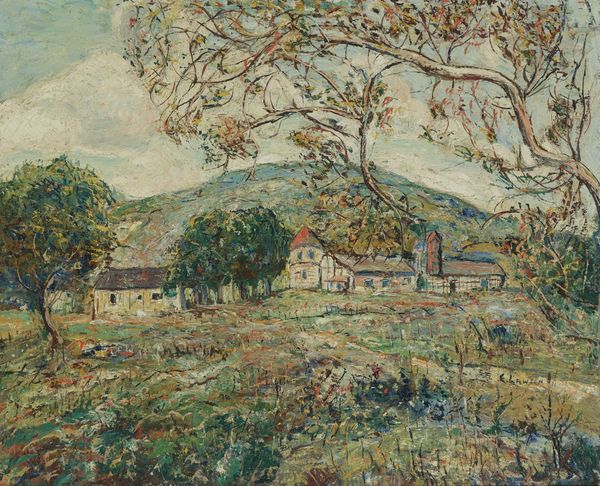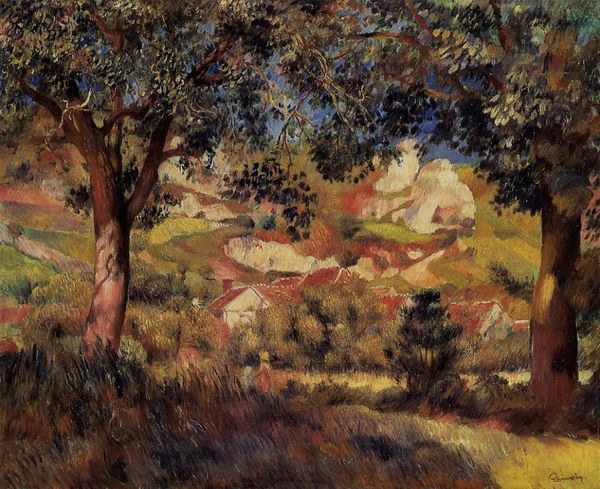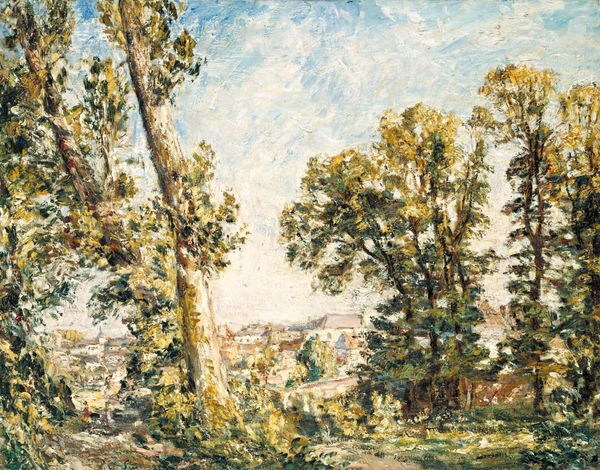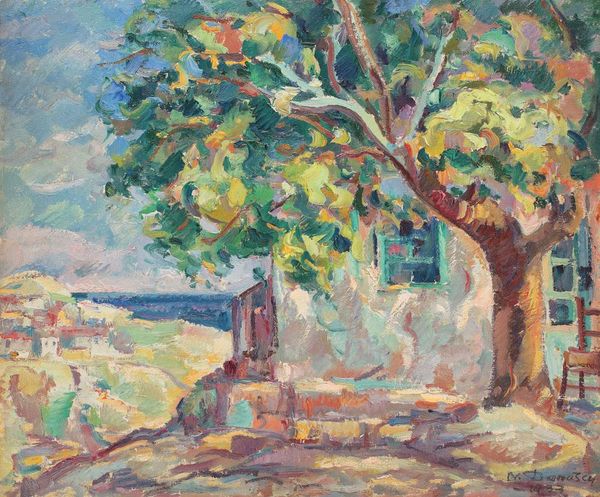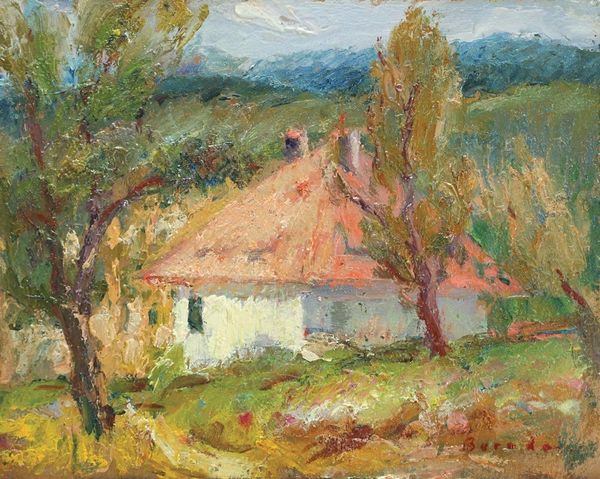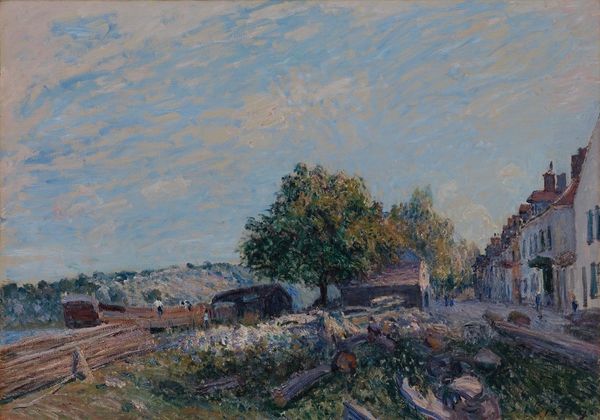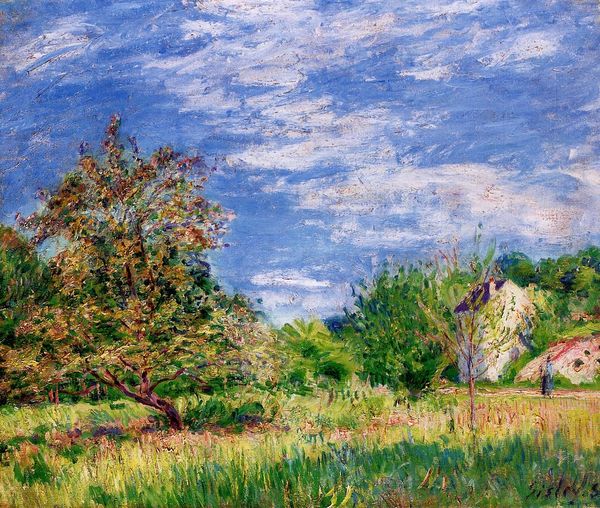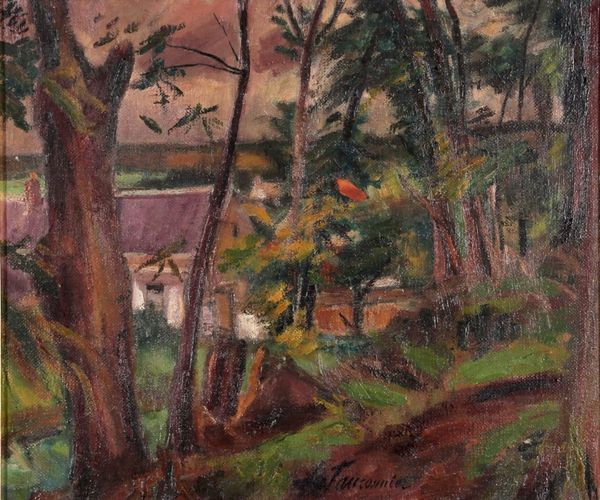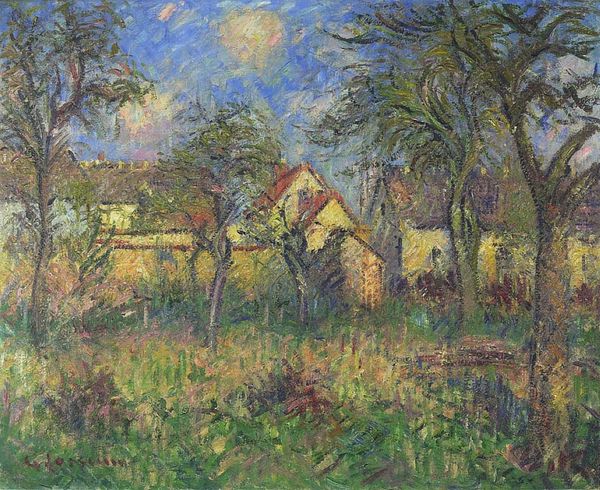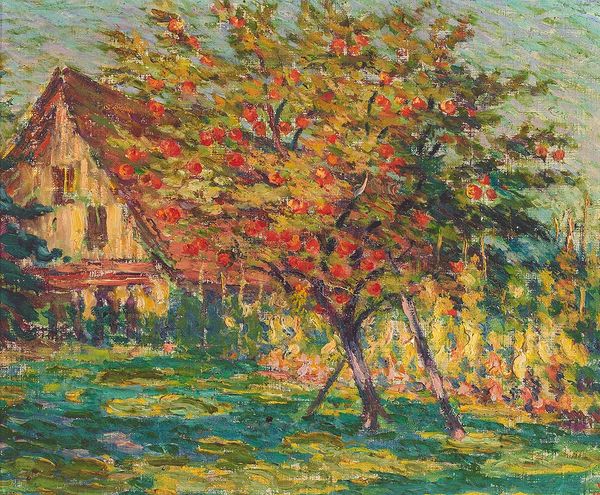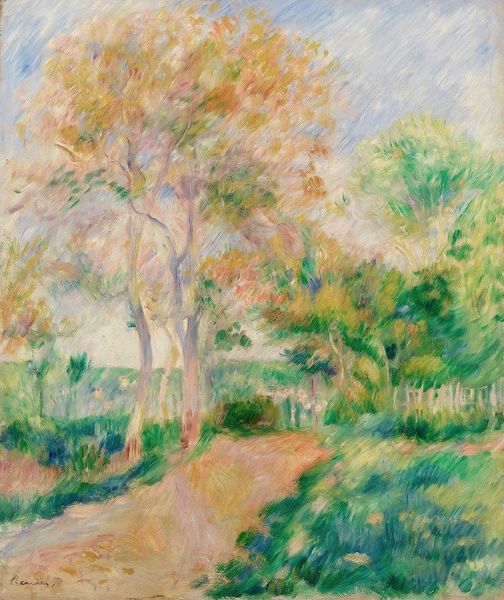
#
abstract expressionism
#
abstract painting
#
impressionist painting style
#
landscape
#
impressionist landscape
#
oil painting
#
fluid art
#
acrylic on canvas
#
seascape
#
painting painterly
#
watercolor
Copyright: Public Domain: Artvee
Curator: So lush! It immediately evokes that sense of sheltered intimacy you find in rural landscapes. Editor: Indeed. We're looking at "Paysage," or "Landscape," created by Armand Guillaumin sometime between 1885 and 1890. What strikes you particularly about its intimacy? Curator: Well, the composition feels intentionally framed to give a glimpse into this secluded space. It suggests themes of private refuge but perhaps also speaks to larger issues about access and ownership of the land at the time. What materials are at play? Editor: Guillaumin was an oil painter. He built the composition up using layered strokes and hues that capture both light and dense thickets. It looks like he has worked in other media too – watercolors or gouache. It’s fascinating how the application builds a sense of vibrancy and movement. It almost disguises the toil involved. Curator: Right, and it reminds us that idealized visions of the countryside often obscure the labor and social dynamics that shaped it. I see reflections on class and gender in terms of representation, and, considering the context of its creation, ideas of political agency become paramount to how one can read this piece. Editor: It’s interesting you say political, because Guillaumin exhibited with the Impressionists, so this piece aligns with broader shifts in artistic practice, and its movement outside academic constraint allowed new social groups and patrons. Curator: I see it as less straightforward than just a reflection of shifts in patronage and exhibitions. Art can reveal structural social relationships. Looking at "Paysage," I see a critical assessment of humanity's relationship with land. Editor: I am not so sure; to me, this piece suggests art movements and methods of manufacture and consumption are at the core of the experience, yet I do appreciate the wider narrative it creates. Curator: Perhaps a good way to look at any piece of work to reveal its many layers. Editor: Absolutely!
Comments
No comments
Be the first to comment and join the conversation on the ultimate creative platform.
